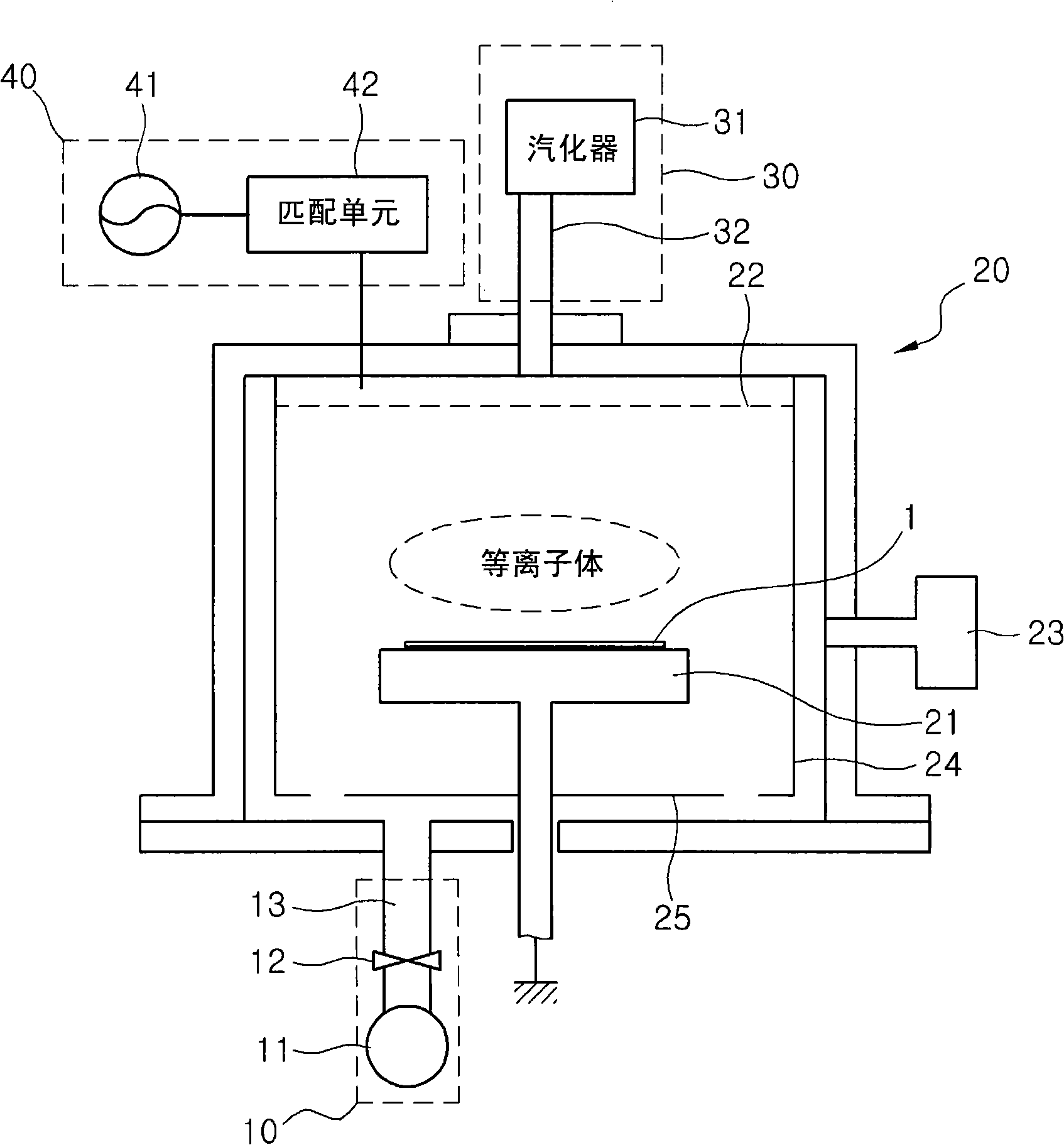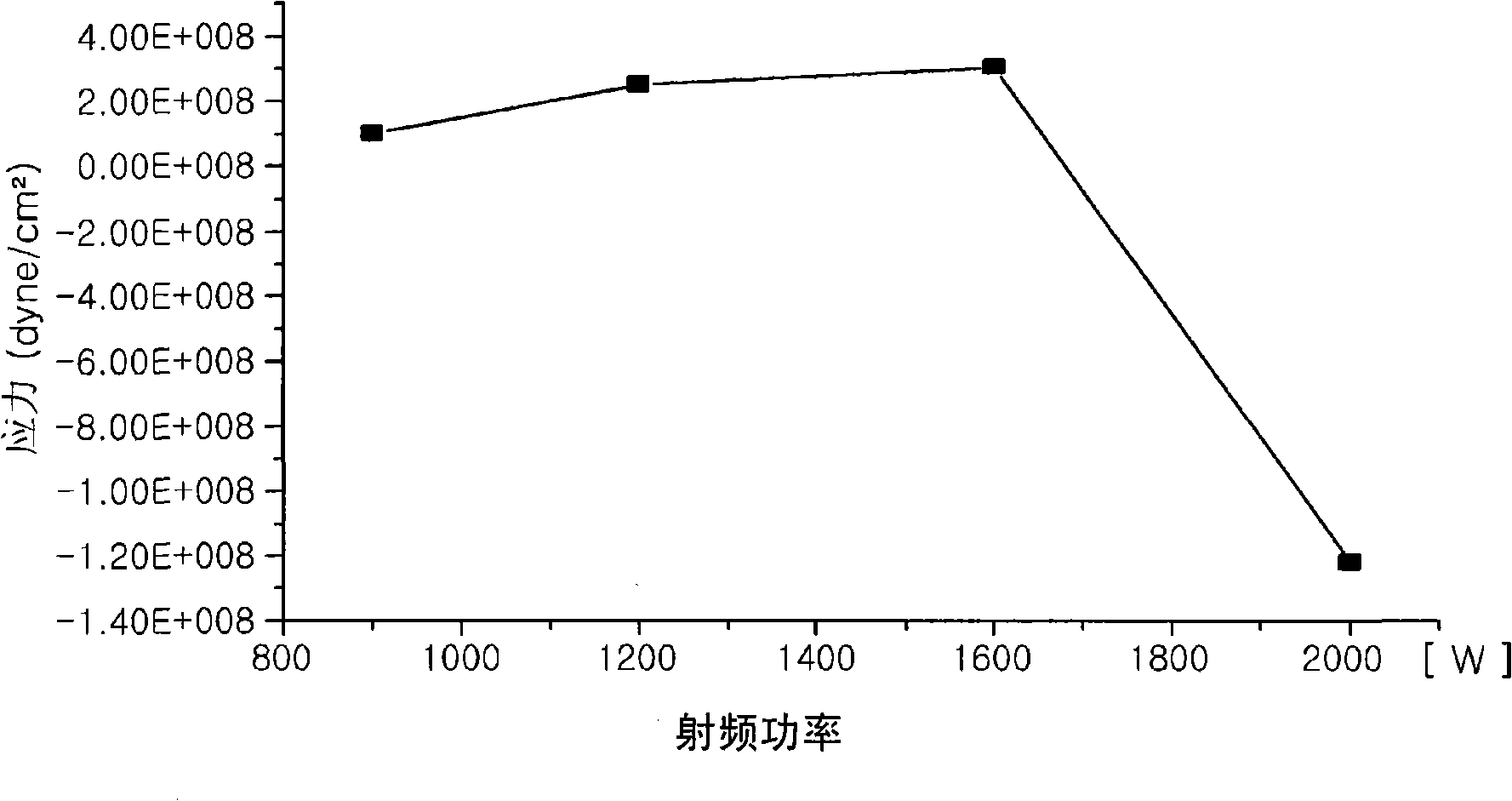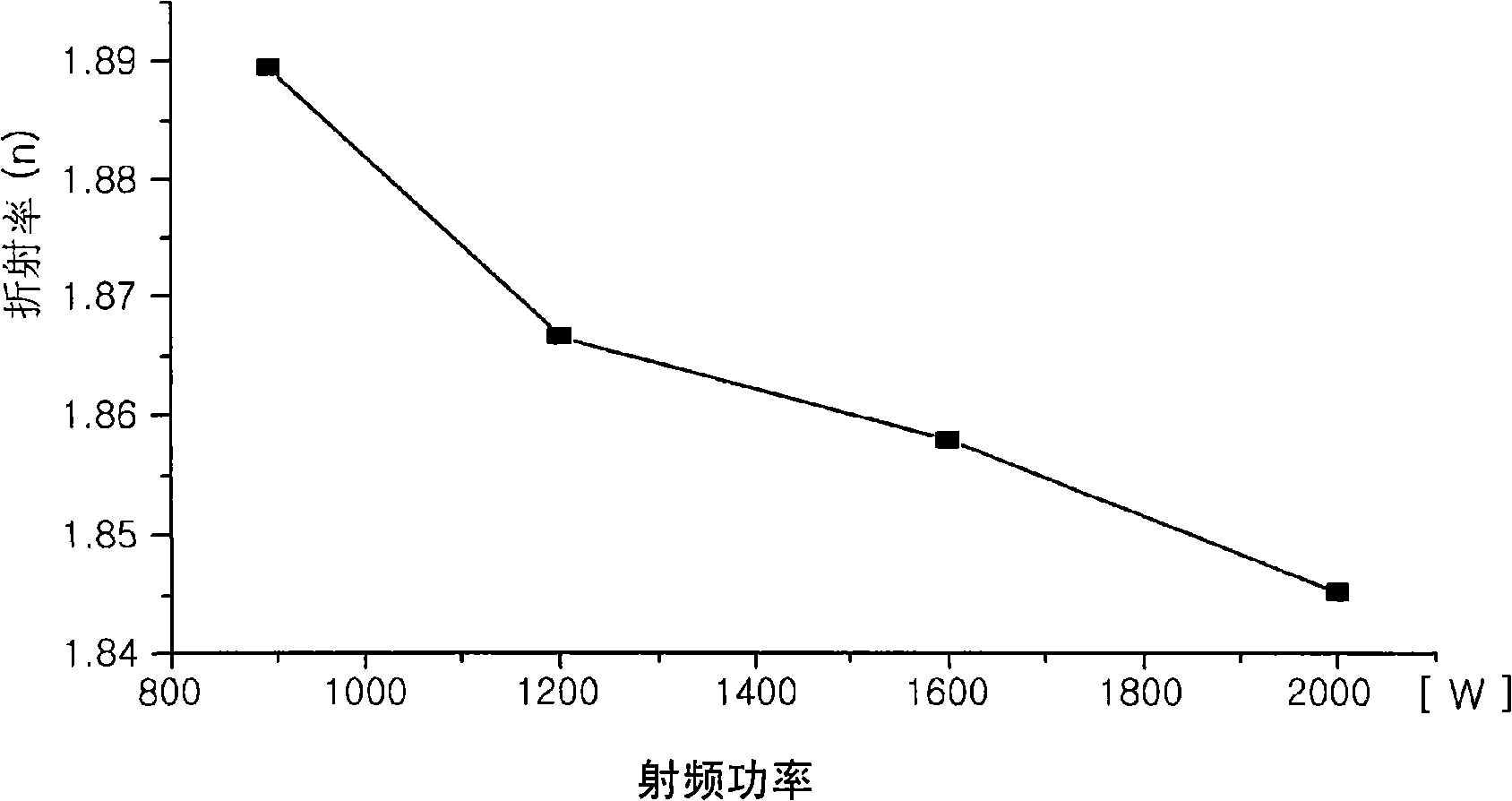Method for forming amorphous carbon film and method for manufacturing semiconductor device using the method
An amorphous carbon film and semiconductor technology, which is applied in semiconductor/solid-state device manufacturing, photosensitive materials for optomechanical equipment, gaseous chemical plating, etc., can solve high cost, poor quality of amorphous carbon film, and long processing time. Time and other issues
- Summary
- Abstract
- Description
- Claims
- Application Information
AI Technical Summary
Problems solved by technology
Method used
Image
Examples
no. 1 example
[0063] First Example: Characterization of Amorphous Carbon Films as a Function of RF Power
[0064] In the first example of the present invention, hexene was supplied at a flow rate of 0.8 g / min (C 6 h 12 ), argon gas was supplied at a flow rate of 300 sccm and helium gas was supplied at a flow rate of 800 sccm to form an amorphous carbon film. Additionally, a distance of 350 mils was maintained between the showerhead and the substrate. Figures 2A to 2D The changes of stress, refractive index (n), light absorption coefficient (k) and deposition rate of amorphous carbon film according to RF power are illustrated respectively.
[0065] Figure 2A It is a graph illustrating the change of the stress of the amorphous carbon film according to the RF power. see Figure 2A , as the RF power increased, the stress increased slightly and then decreased significantly after the RF power became 1600W.
[0066] Figure 2B is a graph illustrating the change in the refractive index (n)...
no. 2 example
[0071] Second example: change of characteristics of amorphous carbon film depending on the amount of reaction source to be supplied
[0072] In a second example of the present invention, hexene (C 6 h 12 ), argon gas was supplied at a flow rate of 300 sccm and helium gas was supplied at a flow rate of 200 sccm to form an amorphous carbon film. Additionally, a distance of 320 mils was maintained between the showerhead and the substrate. In this situation, Figures 3A to 3D Changes in the stress, refractive index (n), light absorption coefficient (k) and deposition rate of the amorphous carbon film depending on the amount of the reaction source to be supplied are described respectively.
[0073] Figure 3A is a graph illustrating that the stress of the amorphous carbon film changes depending on the amount of the reaction source to be supplied. see Figure 3A , as the amount of reactive source to be supplied increases, the stress decreases.
[0074] Figure 3B is a graph ...
no. 3 example
[0079] Example 3: Characteristics of an amorphous carbon film depending on the distance between the shower head and the substrate
[0080] In a third example of the present invention, hexene (C 6 h 12 ), argon gas was supplied at a flow rate of 300 sccm and helium gas was supplied at a flow rate of 800 sccm to form an amorphous carbon film. Additionally, the distance between the showerhead and the substrate was varied in the range of 250 to 350 mils. In this situation, Figures 4A to 4D The variation of stress, refractive index (n), light absorption coefficient (k) and deposition rate of amorphous carbon film according to the distance between the shower head and the substrate are illustrated respectively.
[0081] Figure 4A is a graph illustrating how the stress of an amorphous carbon film varies depending on the distance between the shower head and the substrate. see Figure 4A , as the distance between the showerhead and the substrate becomes larger, the stress decrea...
PUM
| Property | Measurement | Unit |
|---|---|---|
| refractive index | aaaaa | aaaaa |
| refractive index | aaaaa | aaaaa |
| refractive index | aaaaa | aaaaa |
Abstract
Description
Claims
Application Information
 Login to View More
Login to View More - R&D
- Intellectual Property
- Life Sciences
- Materials
- Tech Scout
- Unparalleled Data Quality
- Higher Quality Content
- 60% Fewer Hallucinations
Browse by: Latest US Patents, China's latest patents, Technical Efficacy Thesaurus, Application Domain, Technology Topic, Popular Technical Reports.
© 2025 PatSnap. All rights reserved.Legal|Privacy policy|Modern Slavery Act Transparency Statement|Sitemap|About US| Contact US: help@patsnap.com



